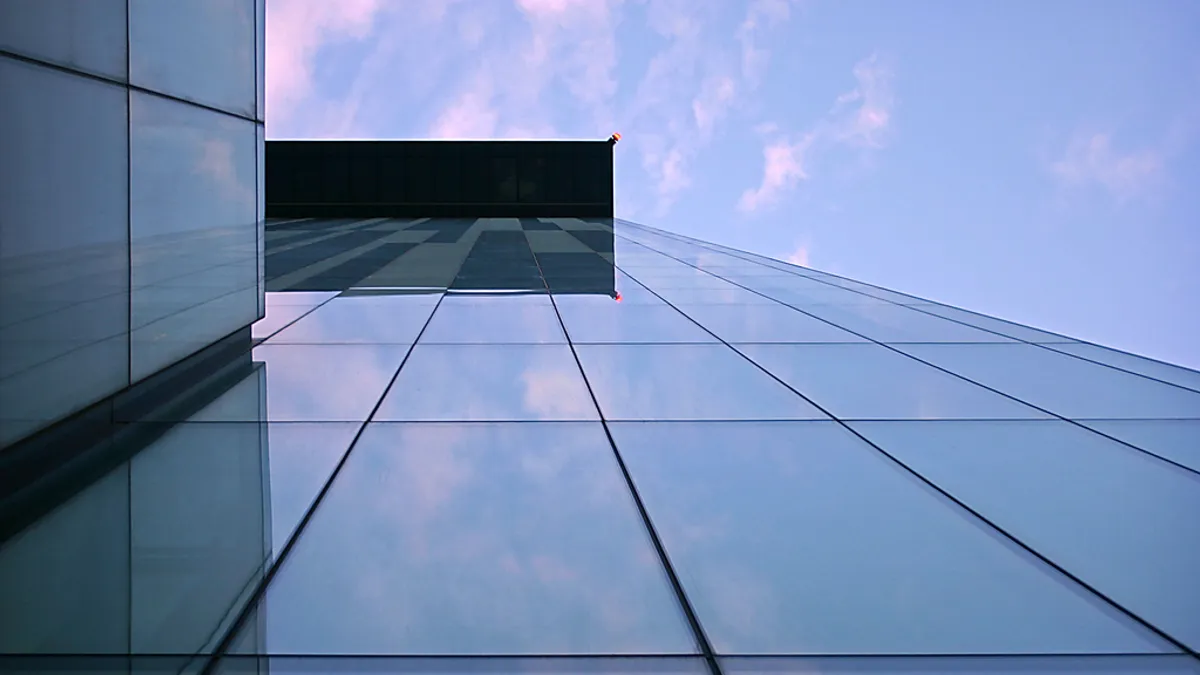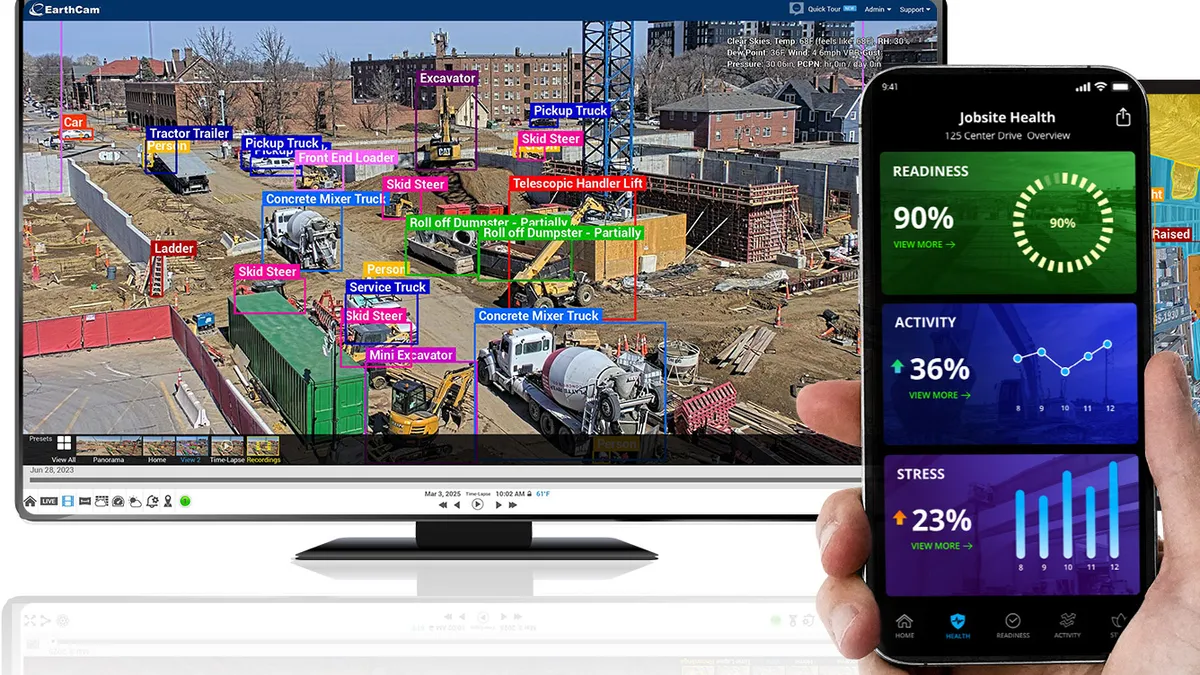From the plate-glass windows that welcomed light into turn-of-the-century high-rises to the climbing glass-and-steel assemblies that shape projects today, architectural glazing has been a definitive feature of building design for more than a century. The trend is prevalent in commercial and residential buildings, which increasingly prioritize glass for its ability to bring daylight inside.
However, typical glazing systems — from single insulated glass units to full-on curtainwalls — tend to be less energy efficient than the surrounding wall system.
Owners have long pushed back on large glazing applications for fear of reducing the assembly’s energy performance and raising the cost to heat and cool the building interior. However, the emergence of more energy-efficient glazing, along with better lighting design software, is encouraging project teams, and their clients, to give glass another look.
Daylighting as a passive design tool
Energy-efficient glazing applications rely as much on high-tech products and modeling systems as they do on low-tech design strategies, such as architectural shading, building orientation and natural ventilation.
"A really energy-efficient building can be beautiful and functional at the same time," said Chris Gorthy, a preconstruction manager at DPR Construction. "By incorporating passive design techniques, such as siting a building properly to maximize its exposure to available natural light, to selecting certain materials, finishes and colors to make the most of that light, it’s now possible to deliver daylight deep into a building."
Gorthy said DPR has seen a resurgence of client interest in glass-friendly facade designs in new and retrofit construction.
"A really energy-efficient building can be beautiful and functional at the same time."

Chris Gorthy
Preconstruction manager, DPR Construction
Daylighting brings glazing technology and passive design together. Adding windows and other features like skylights and lightwells can lower energy costs by reducing reliance on electric lighting. More efficient architectural glass, in turn, can take the load off HVAC systems.
"In the past, a building that was designed with a high percentage of exterior glass would also be equipped with a large, powerful HVAC system to accommodate huge solar heat gains during the summer and to replace heat leaving the building each night," said Ben Leer, a technical consultant at 475 High Performance Building Supply, in Brooklyn, NY.
Improving energy efficiency isn’t the only potential outcome. Research continues to show that exposure to natural light can improve student performance, help healthcare patients recover faster and boost employee productivity. A recent study from Harvard University’s T.H. Chan School of Public Health found that improved indoor environmental quality was associated with increased productivity and higher cognitive function.
Better technology for better modeling
While project teams are bringing more daylight into the building, until recently, the ability to measure and predict its impact — specifically, how light levels inside respond to the changing angle and intensity of the sun throughout the day and the year — was difficult.
Advances in energy-modeling technologies have digitized and streamlined calculations for metrics such as annual sunlight exposure and spatial daylight autonomy, two components of the U.S. Green Building Council’s LEED certification.
Still, as lighting designers are quick to note, there is not yet a single, full-building design software platform that fulfills all daylight modeling needs. While plug-ins like ElumTools, Daysim and Diva allow designers to model daylighting applications largely in the building model, the industry is awaiting better integration of daylighting analysis tools in BIM.
Glazing products and system upgrades
Recent advances in architectural glass manufacturing support efforts to bring more daylight indoors while maintaining thermal comfort and lowering energy consumption.
On the products front, manufacturers are improving performance through double and triple glazing, low-e coatings and thermally broken frames, while offering thinner stiles and larger panes. As Architect magazine pointed out, the impact of glass in building-envelope design has expanded beyond the window unit to include such assemblies as curtainwalls and double-glazed facades.
German glass manufacturer Lamilux is known for its triple-glazed rooftop window units, which feature three glass lites (each glazed on both sides) encased in an airtight, insulated frame. The units provide an additional layer of insulated airspace to mitigate thermal bridging, and their frames feature interlocking molded plastic and rubberized seals to reduce heat or cold transfer. Lamilux claims to be the first manufacturer to provide a skylight system for the ultra-low-energy Passive House construction method and certification.
"Until very recently, the thought of adding a rooftop skylight to a high-performance building was rarely part of the plan," Leer said. "Daylighting through the roof was typically considered to be more trouble than it was worth, creating a huge hole in the building’s thermal envelope and providing little tangible benefit for the building owners and inhabitants." Now, many high-end homes and other commercial facilities incorporate features like skylights, light walls (shown above) and glass roofs for daylighting.
The emerging category of electrochromic glazing is also attracting interest. Companies like SageGlass and View Dynamic Glass offer window units whose opacity can be adjusted to allow more or less light through, triggered by electric currents sent on-demand or preset in the building management system. Building products manufacturer Saint-Gobain's new North American headquarters (shown below) is clad in 17,000 square feet of SageGlass’s LightZone glazing with controllable tinting zones, helping to maintain exterior views and interior daylighting levels and reduce glare on computer screens."
Greater awareness of daylighting’s potential impact — from improved occupant well-being to lower energy costs — has some commercial tenants reluctant to lease space that relies extensively on electric lighting.
"[They] are increasingly concerned about being able to provide their employees and customers with enough natural light during the day," Gorthy said. "If they can’t, their clients are leaving to find a place where they can. It’s becoming that important [for some businesses] to be able to create a healthy work environment for their employees, and many times that starts with daylighting."





















